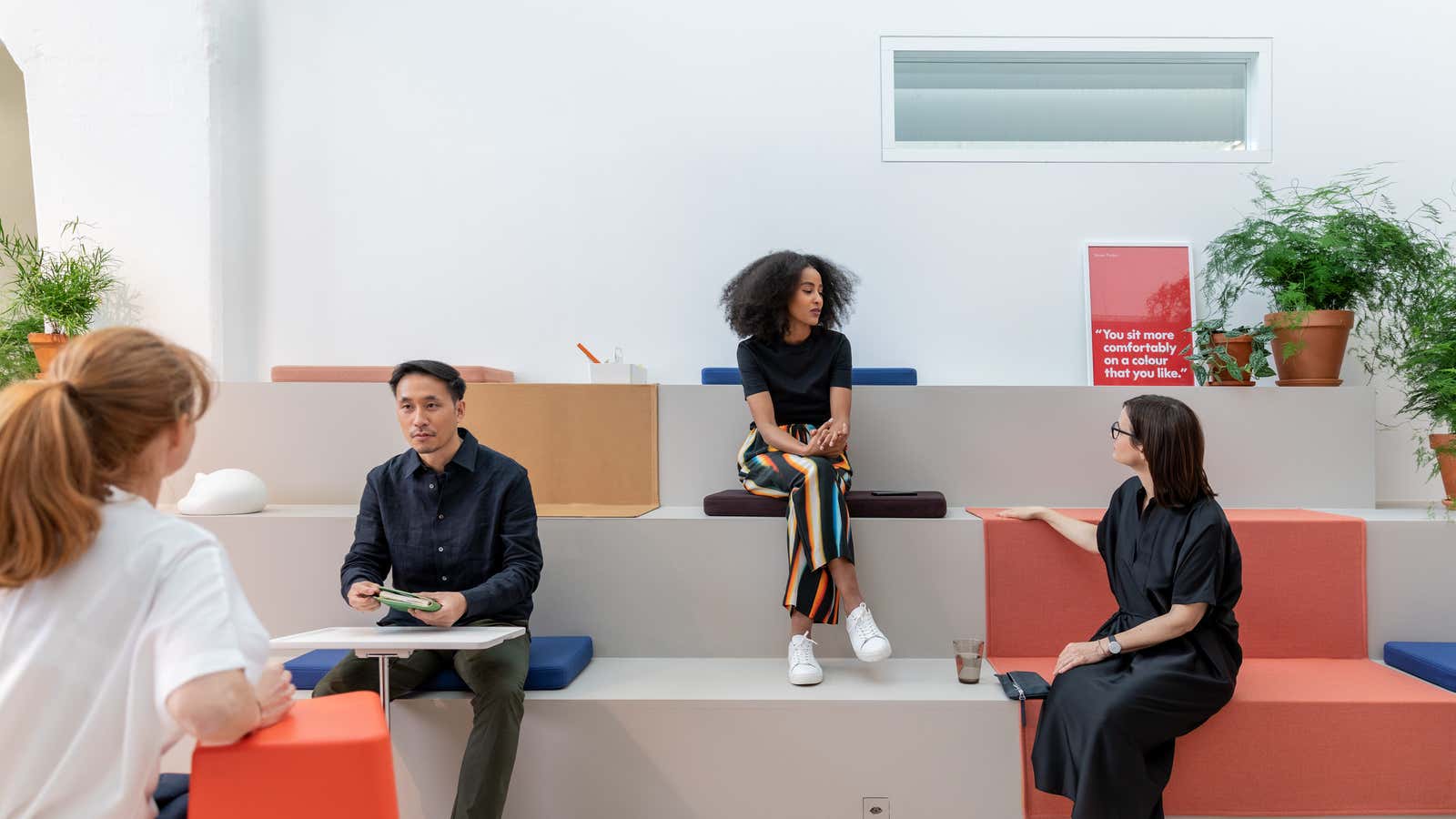There’s a lot of dead air in post-pandemic offices.
New data from Google indicates that activity at workplaces that have reopened in New York, London, and San Francisco is less than half of pre-Covid levels. Companies are trying various tactics to lure employees back to their desks, like offering commuting stipends or free catered lunches. But Christian Grosen, chief design officer at the Swiss furniture maker Vitra, found a simpler and surprisingly effective strategy to animate the workplace: Get a speaker and play some music.
Eschewing the notion that corporate offices should be “library-like” zones of focus, the Danish-born designer believes it’s the hum of activity that will eventually draw people out of their work-from-home bubbles. On days when few workers show up, introducing ambient music can do wonders to make a place seem alive. The tactic already seems to be working at Vitra’s headquarters.
“When you’re in an office that’s really quiet, even the smallest sound becomes really annoying,” Grosen explains. “Music provides background sounds, which breaks the deafening silence. I think that’s the important part.”
Music while you work
A number of scientific experiments attests to the benefits of playing music at work. A 2017 study offers evidence that music is better at eliminating stress and anxiety than anti-anxiety medication. Another study suggests that playing background tunes can boost productivity by making repetitive tasks seem more bearable.
🎧 For more intel on mood-boosting music, listen to the Quartz Obsession podcast episode on Afrobeats. Or subscribe via: Apple Podcasts | Spotify | Google | Stitcher.
The Brits proved this theory on a grand scale during World War II with a program called “Music While You Work.” Factories believed that putting on peppy orchestral music twice daily “might help to step up the pace of work and get the military the munitions they so badly needed,” as the BBC explains. And an oft-quoted experiment called “the Mozart effect” proposed that workers who listened to the Baroque composer for 10 minutes performed better at spatial tasks.
Music, as a 2020 study indicates, also can combat feelings of loneliness in a sparsely populated office, by functioning as a social surrogate.
What type of music is appropriate for the office?
Grosen says that choosing the right music and playing it at the right volume is imperative. What type of music is appropriate for the office? It depends on the time of day and the tasks workers are tackling, he says.
“Sometimes we play jazz, or instrumental in the morning, and maybe in the afternoon we put on something with a little bit more tempo,” he says. “I think it’s important that it comes off as a background sound that you may not even really notice.”
🎧 For more intel on the modern office, listen to the Quartz Obsession podcast episode on office chairs. Or subscribe via: Apple Podcasts | Spotify | Google | Stitcher.
A poll by the office-oriented streaming service Cloud Cover Music indicates that most American workers find classic rock, alternative, and pop music as the most conducive for working, while hip-hop, heavy metal, and electronic dance music are rated as the most distracting.
Music as a lubricant for collaboration
Apart from improving the office vibe, music can also serve as an ice breaker. When he joined Vitra about a year ago, Grosen observed that his colleagues, like many open-plan offices workers, adhered to an “unspoken” (naturally) code of silence.
“The office was completely silent; nobody talked to each other,” he recalls. “I was like, ‘This is supposed to be an innovative department that people should exchange, have ideas, and try out things.’ It almost required a cultural change to really assure people that it’s OK to make a little bit of noise.”
This key observation led Grosen to design a “club-like office” for hybrid workplaces, with more areas dedicated to group work and social interaction instead of solo desks. “[In the past] all collaborative work was invisible, forced to migrate outside of the shared workspace to smaller meeting rooms,” Grosen writes in a June 2021 Vitra white paper. “This makes no sense today when people mainly come to the office for the purpose of collaboration and creative teamwork.”
